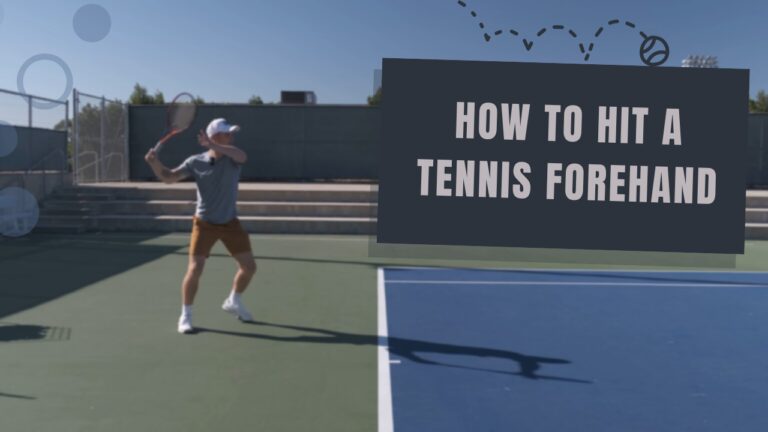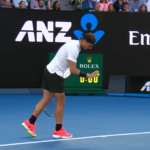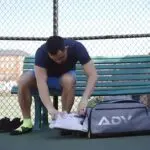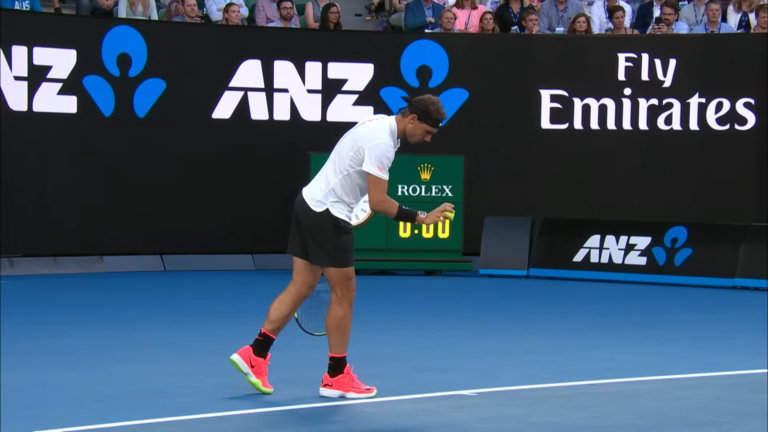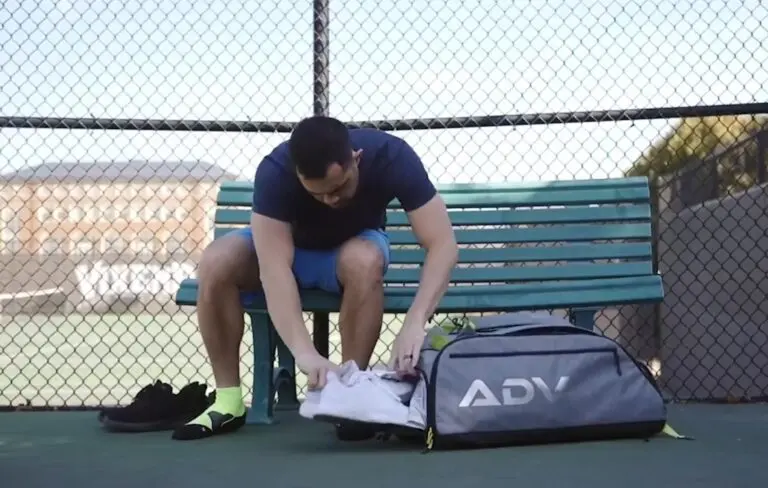Learning how to hit a tennis forehand may sound difficult if you’re a beginner. However, the truth is that with a bit of practice and useful exercises, you can learn how to hit a forehand like a pro in no time!
Tennis is a sport that requires more than just being talented. Developing tennis skills and improving them, as well as your posture, stance, and footwork, is necessary if you want to be successful at it. To that end, we’re here to provide you with the basic rules and techniques that will make hitting a tennis forehand a piece of cake every time!
We compiled a summarized list of all the things you should know and learn before you step onto the court to play. This includes forehand techniques, grip, and everything else that you should be aware of.
Once you read this article, you will be ready to take on the tennis world by storm and improve your skills to perfection! The best part is that you won’t have to spend hours, days, or weeks searching for relevant info—our article provides it all, and you can read it in less than 10 minutes!
Tennis Forehand – Technique
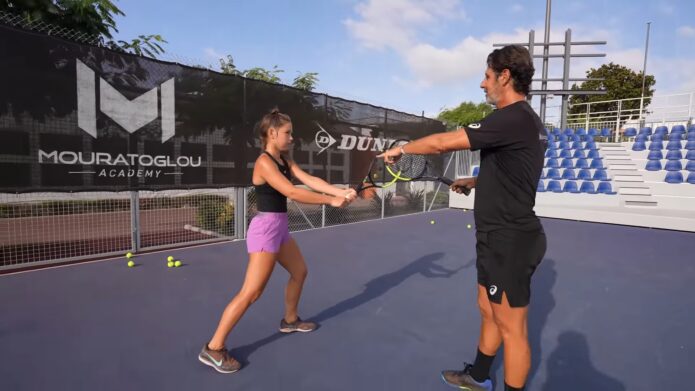
When it comes to the tennis forehand technique, the matter is a bit more complicated than simply tossing the ball and hitting it with a racket. However, you don’t have to worry—learning the technique is not as difficult as you might imagine. Let’s start by explaining how it works.
Firstly, you need to have an open stance that will allow you to swing with maximum power. What this means is that you shouldn’t have any weight on your feet but remain centered and still be able to move in any direction. Your racket head should remain higher than your grip hand, which will also allow you to add more power if needed.
What you should pay attention to the most, especially if you’re a beginner, is the grip. Without a good grip, hitting a forehand is next to impossible. We’ll explain the different grip types in detail later in the article, but the important thing to remember here is that you should not hold your racket too tightly. This is a common mistake among players, especially beginners.
They believe that holding the racket too tightly will give them more control and advantage when, in reality, it does the opposite. A lighter and relaxed grip is the one that gives you more control over the shot, and it does even more than that—it prevents you from having painful blisters and sore hands from gripping your racket handle too tightly.
Tennis Forehand – Grips
As promised, we will discuss tennis forehand grips in detail now. There are 4 main types of forehand grips, and they include:
1. Continental Forehand Grip
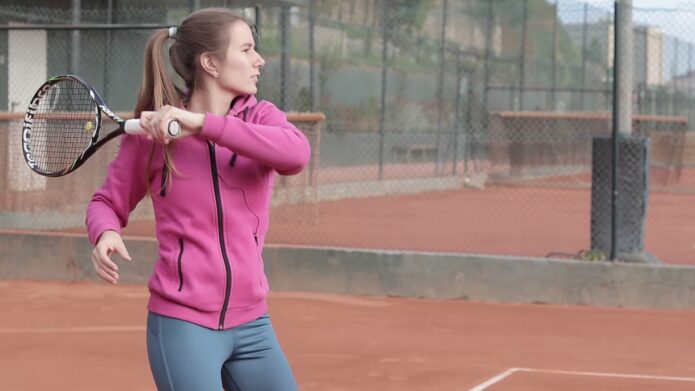
The continental grip is the most basic one, and it is most commonly recommended for beginners. It is used for serves, volleys, overheads, slices, and more, and it is one of the easiest grips to master.
For this grip, you put your knuckle on your index finger and heel pad on bevel #2. Although the continental grip is recommended for beginners and can be used to hit a forehand, other grips can prove more effective for this shot.
2. Eastern Forehand Grip
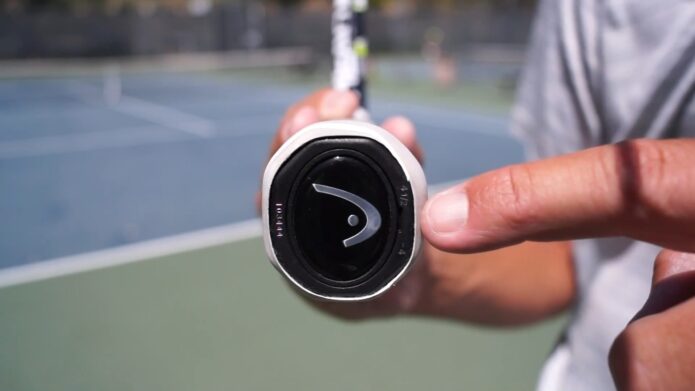
The next on our list is the eastern grip, and this grip is the most commonly used one when it comes to hitting a forehand. All you need to do is put your hand flat against the strings, as well as slide it down the handle. That’s all!
What is also great about this grip is that it allows you to add some topspin to your shot as well, and it is quite easy to learn how to use it to your advantage no matter what level of player you are. It’s also super easy to change between the continental and eastern grip along the way.
3. Western Forehand Grip
For the western forehand grip, you should place your landmarks on bevel #5. This grip is excellent for topspin shots, as well as in instances when you want the ball to bounce faster and higher.
If you’re looking for a super easy way to perform a forehand, this grip might not be the ideal choice. It lacks when it comes to returning low balls, and it is quite difficult to change between this grip and the other ones.
4. Semi-Western Forehand Grip
We’ll conclude our list with the semi-western grip—a forehand grip that is mostly recommended for advanced players. If your dominant hand is your right one, you should put the palm side of your index finger’s knuckle on bevel #4.
However, if you’re left-handed, place it on bevel #6. What’s important to be said about this grip is that it is somewhat difficult to learn and master, and that is why it is only recommended for more advanced players. However, once you master it, you will be able to look forward to more control, power, and precision.
Tennis Forehand – Useful Information
If you’re searching for a way to perfect your tennis forehand and hit a powerful one every time you play, practice is key. There is no shortage of exercises you can do to practice your forehand, backhand, serve or anything else you want or need to.
You should also pay attention to your footwork and stance because without these two done correctly, chances are you won’t be able to hit a good forehand at all.
Footwork drills are exercises that are very beneficial when it comes to practicing this part, and all you need for it is a pair of agility ladders. As for the other aspects, you can practice your forehand (and other shots) with or without a partner. If you have a partner, go to the court regularly and practice until you’re satisfied with the results.
If not, find a brick wall and bring your racket and a ball to practice without your partner. But remember—practice makes perfect, so put in the work and you will improve your skills in no time!
Watch this video for additional tips:
References:
https://www.masterclass.com/articles/how-to-hit-a-topspin-forehand-in-tennis
Related:
- Top 19 Best Tennis Bags 2024 [Unbiased Reviews]
- 20 Best Tennis Shoes 2024 - Stylish and Athletic
- 18 Best Tennis Racquets 2024 - Exclusive Reviews &…
- 15 Best Tennis Balls 2024 - USTA and ITF Approved
- 15 Best Tennis Racquet for Beginners & Intermediate…
- 10 Best Tennis Ball Machine 2024 - Perfect for Solo Players

